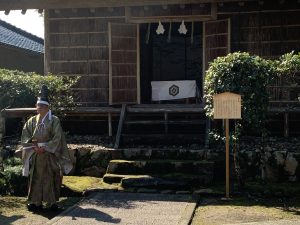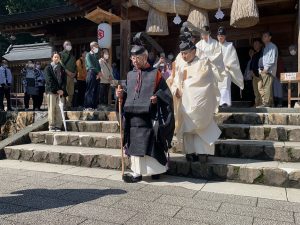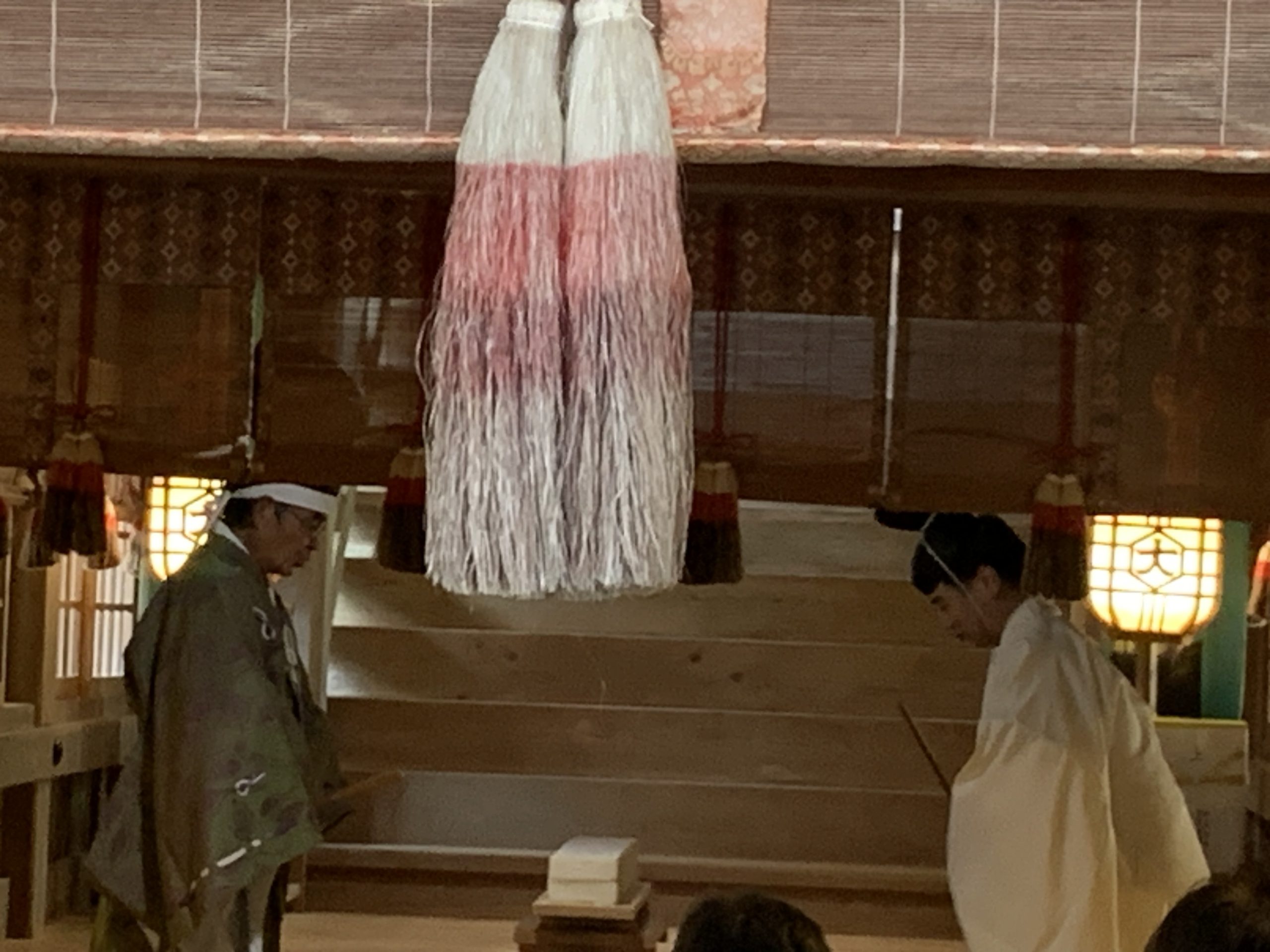Yakumo ー On October 15th, a unique Shinto ritual was held at Kumano Grand Shrine, a renowned shrine in Shimane Prefecture. Kumano Grand Shrine is situated at the base of Kumano Mountain and is dedicated to Susano and his descendant, Okuninushi, symbolic deities of Izumo Province. Many visitors gathered from all over Japan to the shrine to enjoy watching the divinity service.
Kumano Grand Shrine is situated at different distances from Tokyo, depending on the mode of transport. It can be reached in approximately:
2.5 hours by air from Tokyo (Haneda Airport),
8.5 hours by a combination of bullet train and local railway, and
12.5 hours by taking the night sleeper train, Sun Rise Izumo.
Please note that these times include the duration it takes to board a bus from Matsue Station to reach the shrine. From Matsue Station to Kumano Grand Shrine is 45 minutes away by Ichibata Bus and requires a local community bus service.

Despite the region’s higher rank of Izumo, Kumano Grand Shrine plays a crucial role, especially in the annual Kamedayuu Shinji ritual every October 15th.

On this day, Kokuso, the spiritual leader of Izumo Province and chief priest of Izumo Grand Shrine, visits Kumano Grand Shrine to request the use of their sacred fire starter mortar and pestle in exchange for rice cakes made by the Izumo side.
Even though Izumo Grand Shrine outranks Kumano Grand Shrine, Kamedayuu, a low-ranking priest of Kumano wearing a green uniform, greets the Izumo grandmaster and his mission. Kokuso’s deputy, wearing white attire, is exposed to many complaints about the rice quality by Kumano’s representative and endures until Kamedayu permits the Izumo side to use the items. Consequently, Izumo is allowed to bring the divinity items to the grand Shine of Izumo. Then Kokuso recites a sacred Shinto prayer for the gods of Kumano Shrine to show his every courtesy while being seen by many sightseers.

This comical Shinto ritual has been a long-standing local tradition.
(Takashi Saito)


One Reply to “Kumano Grand Shrine’s unique “Kamedayuu” Shinto ceremony”